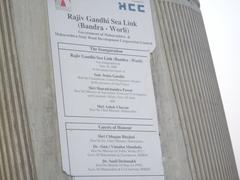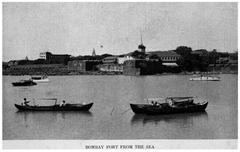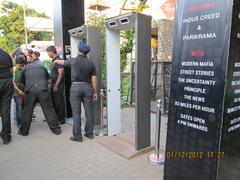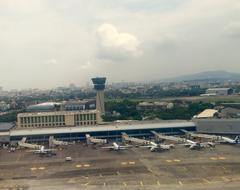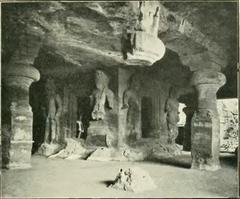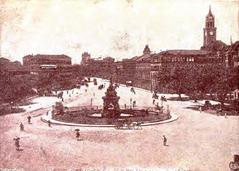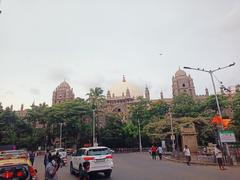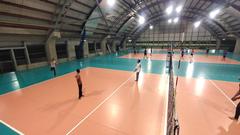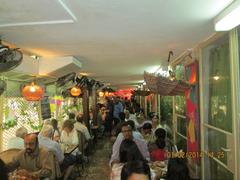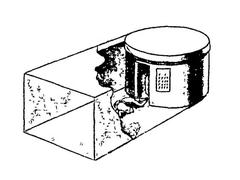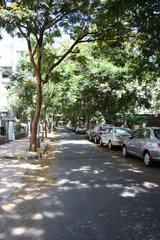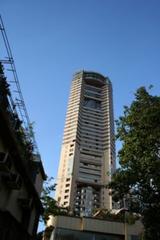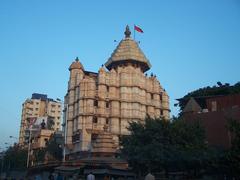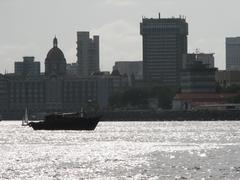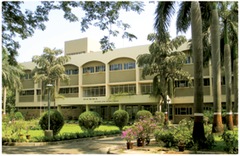Complete Guide to Visiting Sewri Fort in Mumbai, India
Date: 19/07/2024
Introduction
Sewri Fort, a hidden gem nestled in the bustling city of Mumbai, India, offers an intriguing journey into the city’s colonial past. Constructed by the British East India Company in 1680, this fort was an essential part of the British defensive strategy against potential invasions by other European colonial powers, particularly the Portuguese (Mumbai Tourism). Perched on a hill, Sewri Fort provided a strategic vantage point to monitor the Mumbai harbor, making it a critical military outpost during its time (Archaeological Survey of India).
The fort’s architecture, characterized by thick basalt rock walls, bastions, and underground tunnels, reflects its military purpose. Despite its small size compared to other Indian forts, Sewri Fort holds significant architectural and historical value (Mumbai Mirror). Over the centuries, the fort played a pivotal role in several conflicts, including the British defense against the Marathas in the late 17th and early 18th centuries.
However, as the British consolidated their control over Mumbai, the fort’s strategic importance waned, leading to its neglect and eventual deterioration by the early 19th century (The Hindu). In recent years, there has been a renewed interest in preserving this historical site, with various initiatives undertaken by the Archaeological Survey of India (ASI) and local heritage groups (Mumbai Heritage Conservation Committee).
Visiting Sewri Fort today offers a unique blend of history, culture, and nature. The fort is open to the public throughout the year, and there is no entry fee. The best time to visit is during the winter months (November to February) when the weather is pleasant, and the nearby Sewri mudflats attract migratory birds like flamingos, adding to the fort’s allure (Mumbai Metropolitan Region Heritage Conservation Society).
Table of Contents
- Origins and Construction
- Architectural Features
- Role in Historical Conflicts
- Decline and Neglect
- Preservation Efforts
- Visitor Information
- Travel Tips
- Nearby Attractions
- Cultural Significance
- Visitor Experience
- FAQ
Origins and Construction
Sewri Fort, located in the Sewri area of Mumbai, India, is a historic fortification that dates back to the 17th century. The fort was constructed by the British East India Company in 1680 as a strategic defense mechanism against potential invasions by the Portuguese and other European colonial powers. The fort’s location on a hill provided a vantage point to monitor the Mumbai harbor and the surrounding areas. The construction of Sewri Fort was part of a broader strategy by the British to fortify their positions in the Indian subcontinent (Mumbai Tourism).
Architectural Features
Sewri Fort is a relatively small fort compared to other forts in India, but it boasts significant architectural features that reflect its military purpose. The fort is built using basalt rock, a common material for fortifications in the region. The structure includes thick walls, bastions, and a series of underground tunnels that were used for storage and as escape routes during sieges. The main entrance of the fort is flanked by two large bastions, which were equipped with cannons to defend against naval attacks (Archaeological Survey of India).
Role in Historical Conflicts
Throughout its history, Sewri Fort played a crucial role in several conflicts. During the late 17th and early 18th centuries, the fort was a key defensive position for the British against the Marathas, who were expanding their territory in the region. The fort’s strategic location allowed the British to monitor and control the movement of ships in the Mumbai harbor, thereby protecting their trade interests. In 1772, the fort was attacked by the Marathas, but the British successfully defended it, highlighting its importance in the colonial defense network (Mumbai Mirror).
Decline and Neglect
After the British consolidated their control over Mumbai and the surrounding areas, the strategic importance of Sewri Fort diminished. By the early 19th century, the fort was largely abandoned and fell into a state of neglect. The British shifted their focus to other fortifications and administrative centers, leaving Sewri Fort to deteriorate. Over the years, the fort suffered from natural wear and tear, as well as encroachments and vandalism. Despite its historical significance, the fort did not receive adequate attention for preservation and restoration (The Hindu).
Preservation Efforts
In recent years, there has been a renewed interest in preserving Sewri Fort as a heritage site. The Archaeological Survey of India (ASI) has undertaken several initiatives to restore and maintain the fort. These efforts include structural repairs, clearing of encroachments, and the installation of informational plaques to educate visitors about the fort’s history. Additionally, local heritage groups and historians have been advocating for the fort’s inclusion in Mumbai’s tourism circuit, emphasizing its historical and cultural significance (Mumbai Heritage Conservation Committee).
Visitor Information
Opening Hours
Sewri Fort is open to the public throughout the year. The fort does not have specific visiting hours, but it is recommended to visit during daylight hours for safety and a better experience.
Ticket Prices
There is no entry fee to visit Sewri Fort. Visitors can explore the fort and its surroundings free of charge.
Best Time to Visit
The best time to visit Sewri Fort is during the winter months (November to February) when the weather is pleasant. This period also coincides with the arrival of migratory birds at the nearby Sewri mudflats, offering visitors a unique opportunity to enjoy both historical and natural attractions.
Travel Tips
- Travel Light: Wear comfortable shoes and carry water, as the fort involves some walking and climbing.
- Safety: Visit during daylight hours and avoid isolated areas within the fort.
- Photography: The fort offers stunning views of the Mumbai harbor, so don’t forget your camera.
Nearby Attractions
- Sewri Mudflats: Just a short distance from the fort, the mudflats are famous for their migratory flamingos, making it a popular spot for bird watchers.
- Wadala Church: Also known as St. Joseph’s Church, it is one of the oldest churches in Mumbai and is located nearby.
Cultural Significance
Sewri Fort is not only a historical monument but also a site of cultural importance. The fort offers a glimpse into the colonial history of Mumbai and the strategic military planning of the British East India Company. It also serves as a reminder of the various conflicts and power struggles that shaped the region. The fort’s location near the Sewri mudflats, which are a habitat for migratory flamingos, adds to its cultural and ecological significance. Visitors to the fort can enjoy a unique blend of history and nature, making it a valuable asset for heritage tourism in Mumbai (Mumbai Metropolitan Region Heritage Conservation Society).
Visitor Experience
Practical Information
- Location: Sewri Fort, Sewri, Mumbai, Maharashtra, India.
- Opening Hours: The fort is open to visitors from 7:00 AM to 6:00 PM daily.
- Entry Fee: There is no entry fee to visit Sewri Fort.
- Best Time to Visit: November to February.
How to Get There
Sewri Fort is accessible by road and is located approximately 12 kilometers from Mumbai’s city center. The nearest railway station is Sewri Station on the Harbour Line of Mumbai’s suburban railway network. From the station, the fort is a short rickshaw or taxi ride away.
What to Wear
Given the historical and somewhat rugged nature of the fort, it is advisable to wear comfortable clothing and sturdy footwear. Light, breathable fabrics are recommended, especially during the warmer months. Carry a hat and sunglasses to protect yourself from the sun.
What to Bring
- Water: Carry sufficient water to stay hydrated, especially if visiting during the warmer months.
- Snacks: There are limited food options near the fort, so bringing light snacks is advisable.
- Camera: The fort offers picturesque views of the Mumbai skyline and the nearby mangroves, making it a great spot for photography.
- Binoculars: If visiting during the winter months, bring binoculars to spot the migratory flamingos in the nearby mudflats.
Safety Tips
- Stay on Marked Paths: The fort is an old structure with uneven surfaces and potential hazards. Stick to marked paths and avoid climbing on the walls.
- Travel in Groups: It is safer to visit the fort in groups, especially if you are unfamiliar with the area.
- Be Cautious of Wildlife: The area around the fort is home to various bird species and other wildlife. Maintain a respectful distance and avoid disturbing them.
Local Cuisine
While there are no eateries within the fort premises, the nearby Sewri area offers a variety of local food options. From street food stalls to small restaurants, visitors can enjoy traditional Mumbai snacks like vada pav, pav bhaji, and bhel puri.
Environmental Awareness
Sewri Fort is located near ecologically sensitive areas, including mangroves and mudflats. Visitors are encouraged to be environmentally conscious by:
- Avoiding Plastic: Carry reusable water bottles and bags to minimize plastic waste.
- Respecting Wildlife: Do not disturb the natural habitat of the birds and other wildlife in the area.
Emergency Contacts
- Local Police: In case of any emergencies, contact the local police station at +91-22-2374-0000.
- Medical Assistance: The nearest hospital is KEM Hospital, located approximately 5 km from the fort. Contact number: +91-22-2413-6051.
FAQ
Q: What are the Sewri Fort visiting hours? A: Sewri Fort is open from 7:00 AM to 6:00 PM daily.
Q: Is there an entry fee to visit Sewri Fort? A: No, there is no entry fee.
Q: When is the best time to visit Sewri Fort? A: The best time to visit is during the winter months (November to February).
Conclusion
Sewri Fort stands as a monumental piece of Mumbai’s history, blending military, cultural, and natural heritage. Whether you’re a history enthusiast, a nature lover, or simply someone looking to explore the deeper layers of Mumbai, Sewri Fort offers a unique and enriching experience. Ongoing preservation efforts by the Archaeological Survey of India and local heritage groups aim to restore the fort to its former glory and highlight its importance as a cultural and historical landmark (Mumbai Tourism).
References
- Mumbai Tourism, n.d., https://www.mumbaitourism.travel/sewri-fort-mumbai
- Archaeological Survey of India, n.d., https://asi.nic.in/sewri-fort-mumbai/
- Mumbai Mirror, 2019, https://mumbaimirror.indiatimes.com/mumbai/other/sewri-fort-a-forgotten-bastion/articleshow/68212345.cms
- The Hindu, 2019, https://www.thehindu.com/news/cities/mumbai/sewri-fort-a-neglected-heritage-site/article29512345.ece
- Mumbai Heritage Conservation Committee, n.d., https://mhccmumbai.gov.in/sewri-fort/
- Mumbai Metropolitan Region Heritage Conservation Society, n.d., https://mmrhcs.org.in/sewri-fort/
